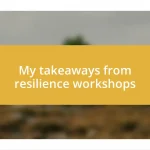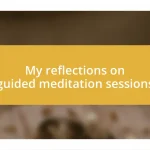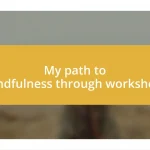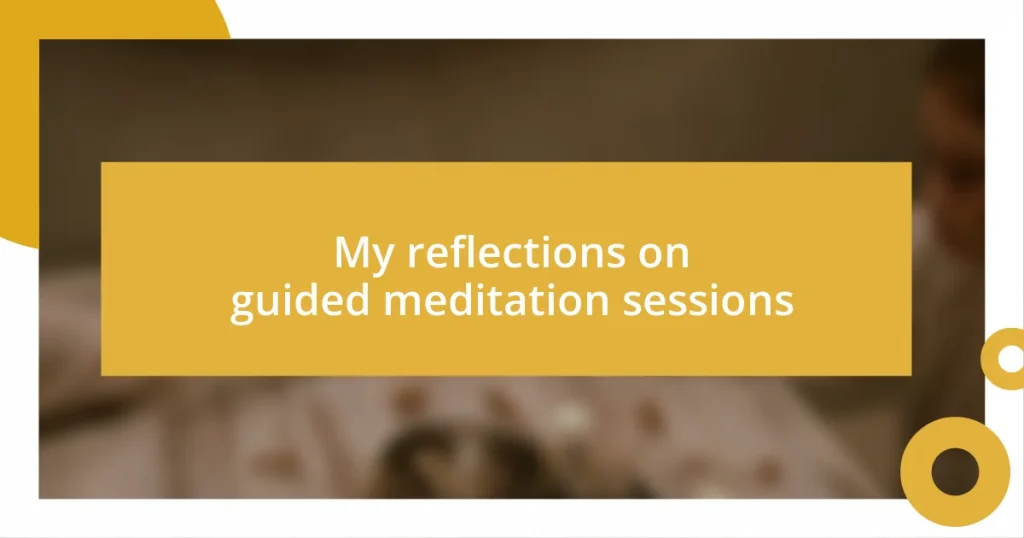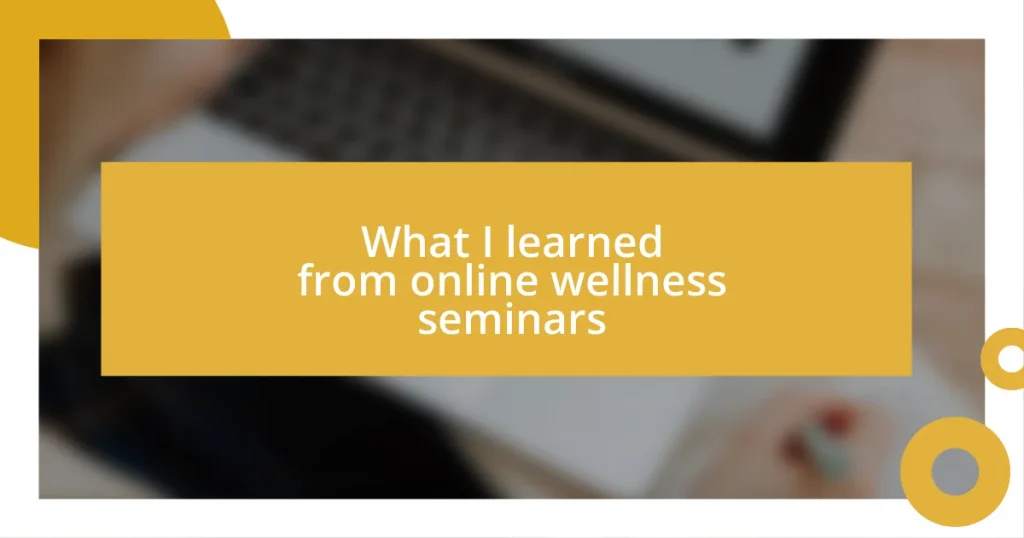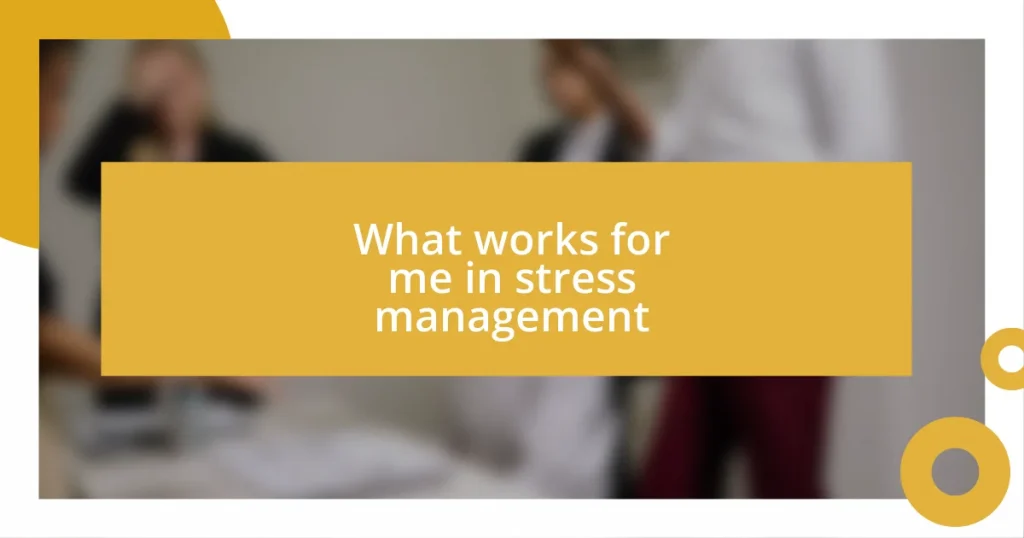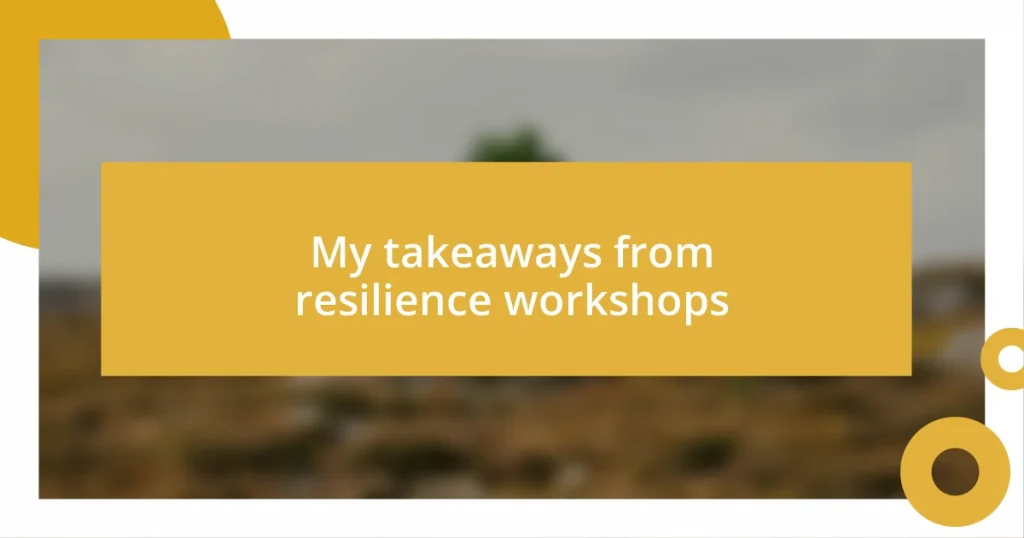Key takeaways:
- Guided meditation sessions are beneficial for stress reduction, enhanced focus, and emotional release, making the practice accessible for everyone.
- Key techniques in guided meditation include visualization, focused breathing, and body scanning, which deepen relaxation and self-awareness.
- Establishing a dedicated meditation space, maintaining consistency, and exploring various meditation styles can significantly enhance one’s practice and emotional connection.
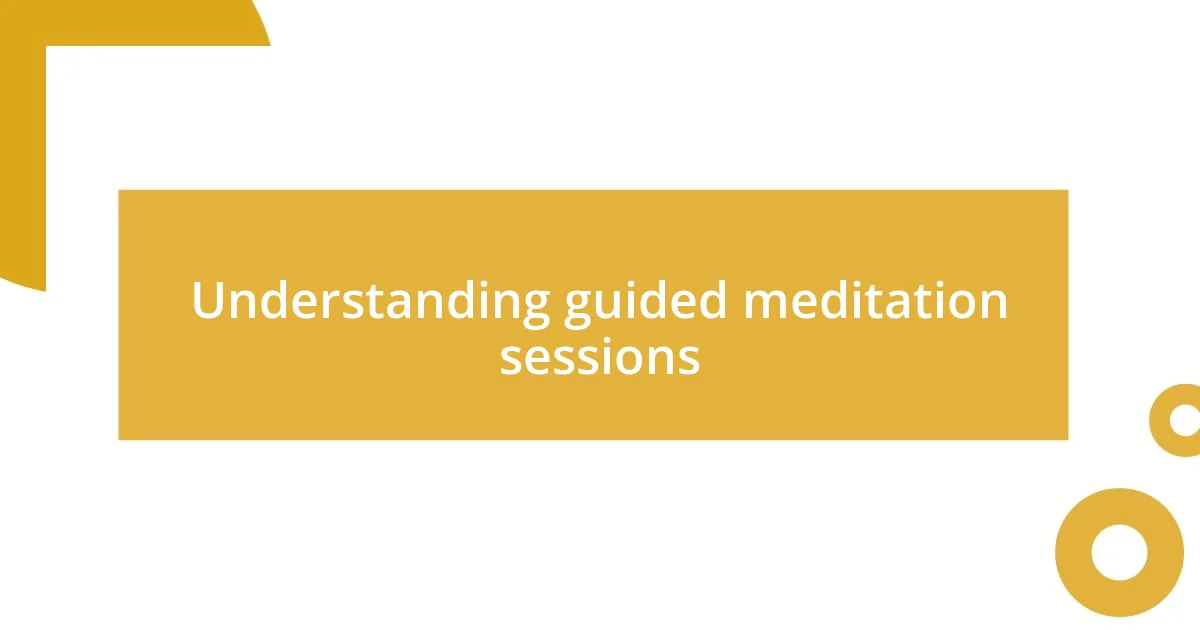
Understanding guided meditation sessions
Guided meditation sessions are structured experiences where an instructor leads participants through techniques designed to induce relaxation and mindfulness. I remember my first guided session; the soothing voice of the instructor helped ease my mind, and I felt like I could truly let go of the day’s stress. Have you ever found it hard to meditate alone? That’s where the guidance becomes essential, transforming what might feel like a daunting task into a comforting ritual.
As participants engage in guided meditation, they typically listen to verbal instructions that encourage deep breathing, visualization, and body awareness. I often find myself imagining serene landscapes, which makes the experience all the more powerful, and it’s fascinating how such imagery can evoke deep emotional responses. Have you ever noticed how a few moments of guided imagery can shift your mood entirely?
The beauty of guided sessions lies in their accessibility; they cater to both beginners and seasoned meditators. When I’ve struggled with persistent thoughts, I found that having someone guide me brought a sense of peace I couldn’t achieve alone. Isn’t it remarkable how a simple voice can help anchor our wandering minds and lead us back to the present?
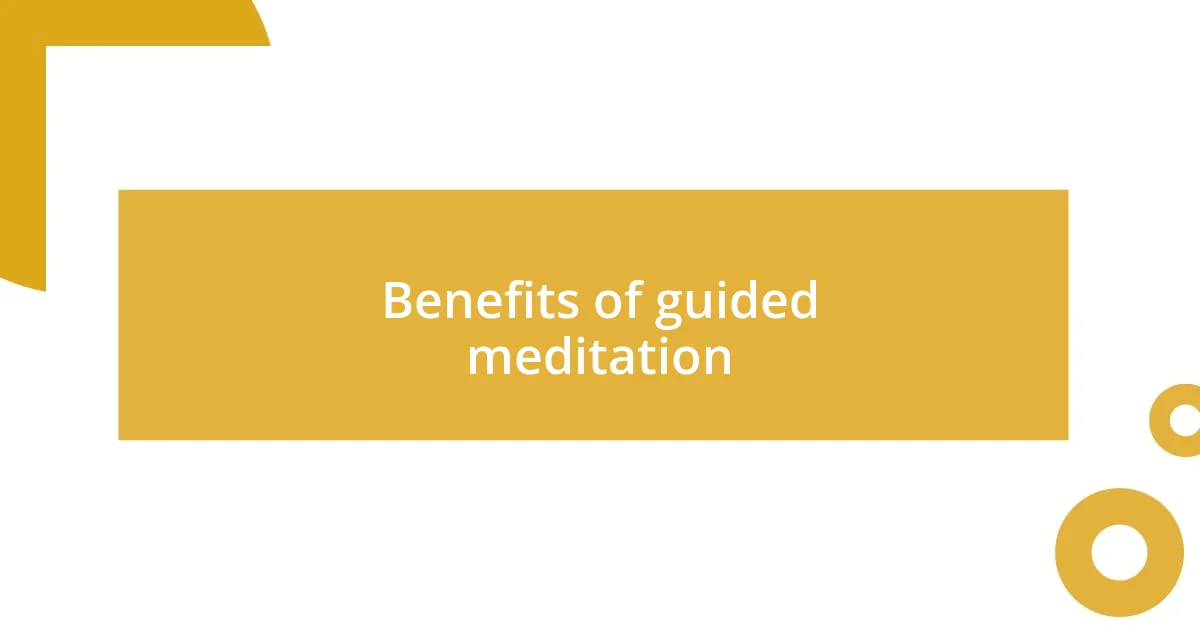
Benefits of guided meditation
Guided meditation offers an array of benefits that can truly enhance one’s mental and emotional well-being. In my experience, it provides direct support for stress reduction, enabling me to navigate life’s challenges with a clearer mind. Those moments of guided breathing and visualizations often lead to a profound sense of calm that tends to linger long after the session ends.
Here are some key benefits of guided meditation:
- Ease of Practice: For newcomers, having an instructor makes starting meditation less intimidating.
- Enhanced Focus: The guidance helps keep wandering thoughts at bay, allowing for deeper mindfulness.
- Emotional Release: I’ve often found that guided sessions can surface and release pent-up emotions, providing relief and clarity.
- Improved Sleep: After incorporating guided meditations into my evening routine, I’ve enjoyed more restful nights, drifting off with ease.
- Community Connection: Participating in group sessions fosters a sense of belonging, which can be uplifting in today’s hectic world.
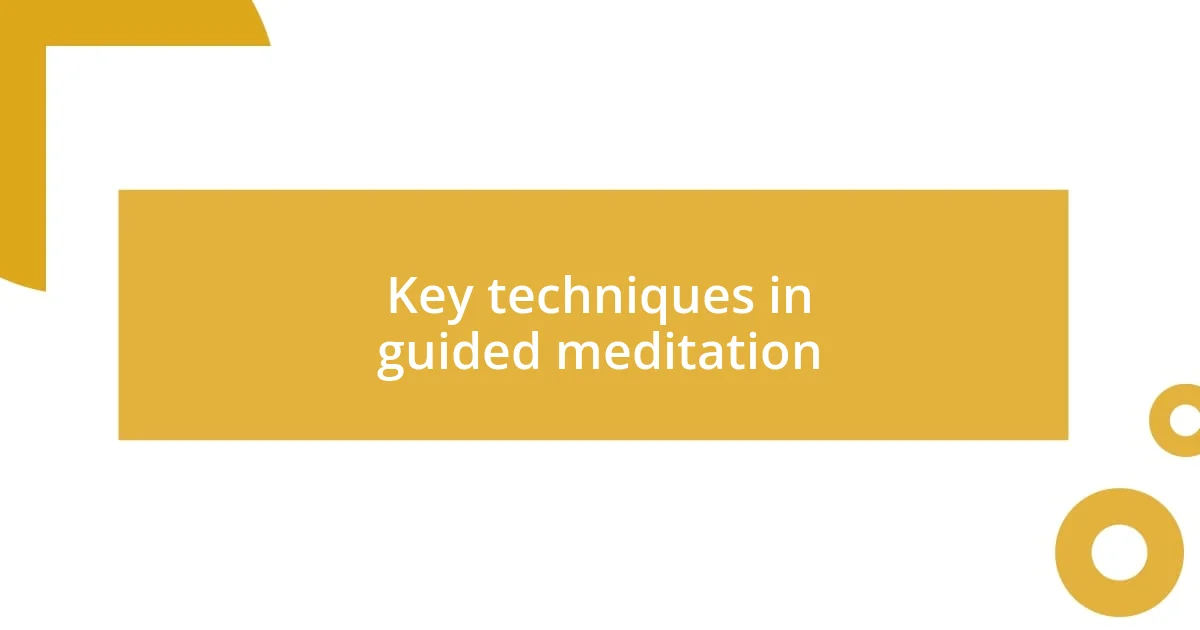
Key techniques in guided meditation
Guided meditation leverages several techniques that deepen the practice and enhance its benefits. One key technique I’ve found invaluable is visualization. When instructed to envision a peaceful setting, I often feel transported. It’s almost like my mind is painting a canvas of tranquility that envelops me, helping to melt away tension. Have you ever tried to picture a place that brings you joy? That mental imagery can be quite transformative, allowing you to step back from daily stressors.
Another essential technique is focused breathing. In my experiences, guided breathing prompts not only anchor my thoughts but also create a rhythm that calms my heartbeat. The instructor’s cues to inhale deeply and exhale slowly help establish a serene environment. It’s fascinating how such a simple act can lead to profound relaxation. Have you ever noticed how your breath can change with your emotional state? Learning to control that breath has been a game-changer for me, fostering a sense of balance during chaotic moments.
Lastly, body scanning is another powerful technique that I cherish. This method involves mentally scanning through the body, noticing areas of tension and actively releasing them. I remember a session where the instructor guided us to focus on each part of our bodies, one at a time. As I consciously relaxed each muscle, I could feel the weight of the world slowly lift. Isn’t it incredible how bringing awareness to our bodies can reveal hidden stress? Such moments of self-awareness transform the meditation experience into a deeper journey of self-discovery.
| Technique | Description |
|---|---|
| Visualization | Imagining peaceful scenes to foster relaxation and mental clarity. |
| Focused Breathing | Utilizing breath awareness to calm the mind and body. |
| Body Scanning | Mental exploration of bodily tension and promoting relaxation. |
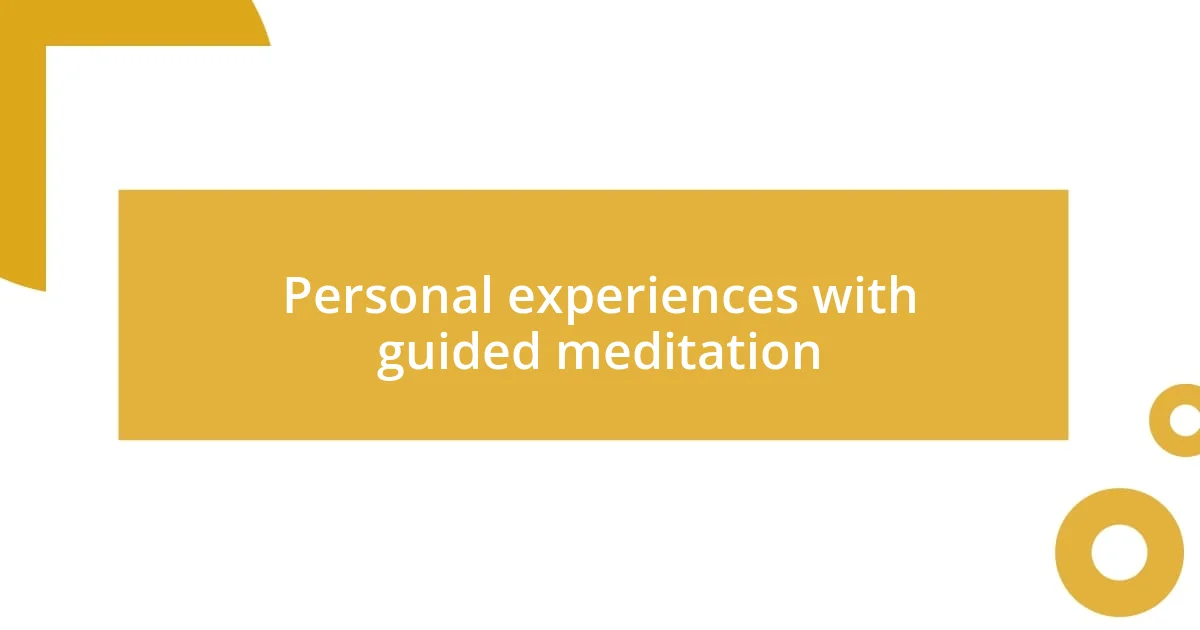
Personal experiences with guided meditation
I’ve had some truly eye-opening experiences with guided meditation that transformed how I view my thoughts and emotions. For instance, during one particularly impactful session, I was guided to visualize a serene beach at sunset, with waves gently lapping at the shore. As I immersed myself in that imagery, I realized how much I had been holding onto stress; it was like releasing a tight grip on a shaky railing and finally allowing myself to breathe freely. Has that ever happened to you, where a simple visualization made you feel a weight lift off your shoulders?
One session that stands out was when the instructor led us through a body scan while playing soft instrumental music in the background. As we slowly moved our attention from our toes to the crown of our heads, I felt my shoulders drop, and all the tension built up from my hectic week began to dissolve. It’s fascinating to think about how such a structured practice can lead to such profound emotional relief, isn’t it? This technique really helped me appreciate the importance of connecting with my body—a lesson that transcended just the meditation itself.
I also recall experimenting with different guided sessions based on specific themes, such as gratitude or self-compassion. During a self-compassion session, I was moved to tears when reflecting on my own struggles. It was a revelation to realize how often I’m harder on myself than I would be on a friend. Have you ever noticed how your internal dialogue shifts as you explore these feelings through guided meditation? It’s a powerful reminder that we all deserve a little kindness, especially from ourselves.
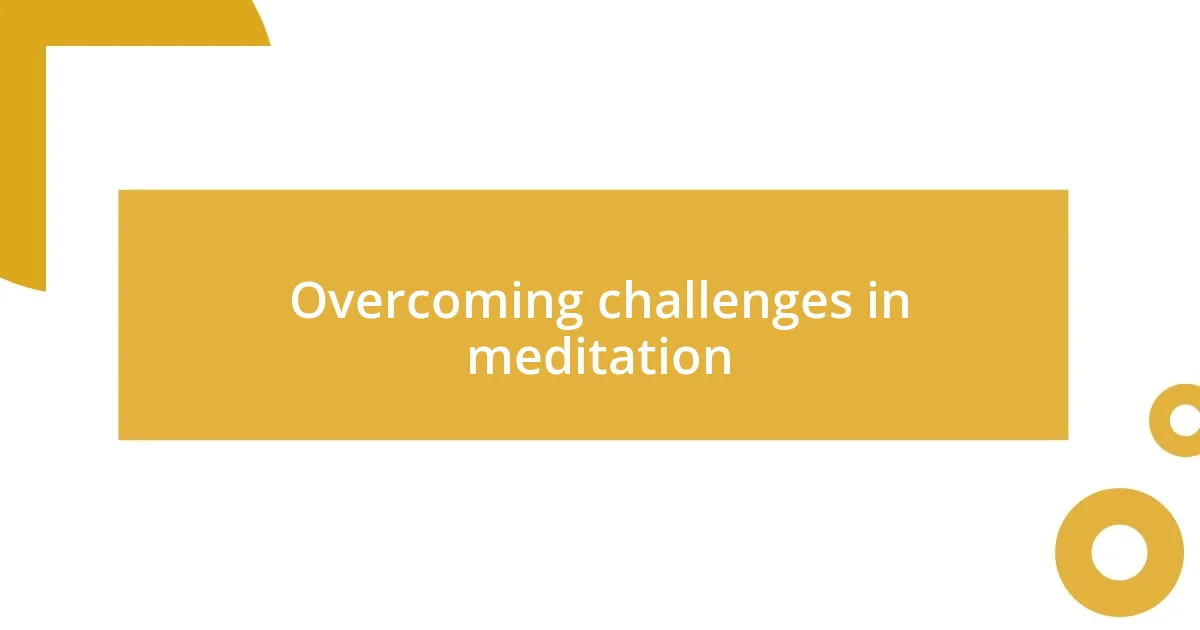
Overcoming challenges in meditation
Meditation can indeed present various challenges, and I often encounter a wandering mind. It’s frustrating, isn’t it? I’ve found that acknowledging those thoughts without judgment is a game-changer. Instead of fighting them, I gently guide my focus back to my breath or the instructor’s voice. This technique transforms distractions into an opportunity for practice, turning every distraction into a lesson in mindfulness.
Another significant hurdle I’ve faced is physical discomfort during longer sessions. There have been times when I’ve felt my back ache or my legs cramp unexpectedly. What I’ve learned is that the key is to adjust my posture mindfully, rather than gritting my teeth and powering through. I remember a session where the instructor encouraged us to find a position that felt supportive, emphasizing that meditation shouldn’t be a battle. This kind of adaptability not only eases physical discomfort but also reinforces the idea that my meditation journey is uniquely mine.
A challenge I consistently face is the expectation of achieving perfect stillness or a profound experience every time I meditate. I used to think that every session had to be transformative. However, I’ve come to appreciate the quieter sessions just as much. They may not feel extraordinary, but they often lay a solid foundation for growth over time. Have you noticed how some of the simplest moments bring about the most profound realizations? It’s this gradual, gentle unfolding of awareness that enriches my practice and keeps me coming back for more.
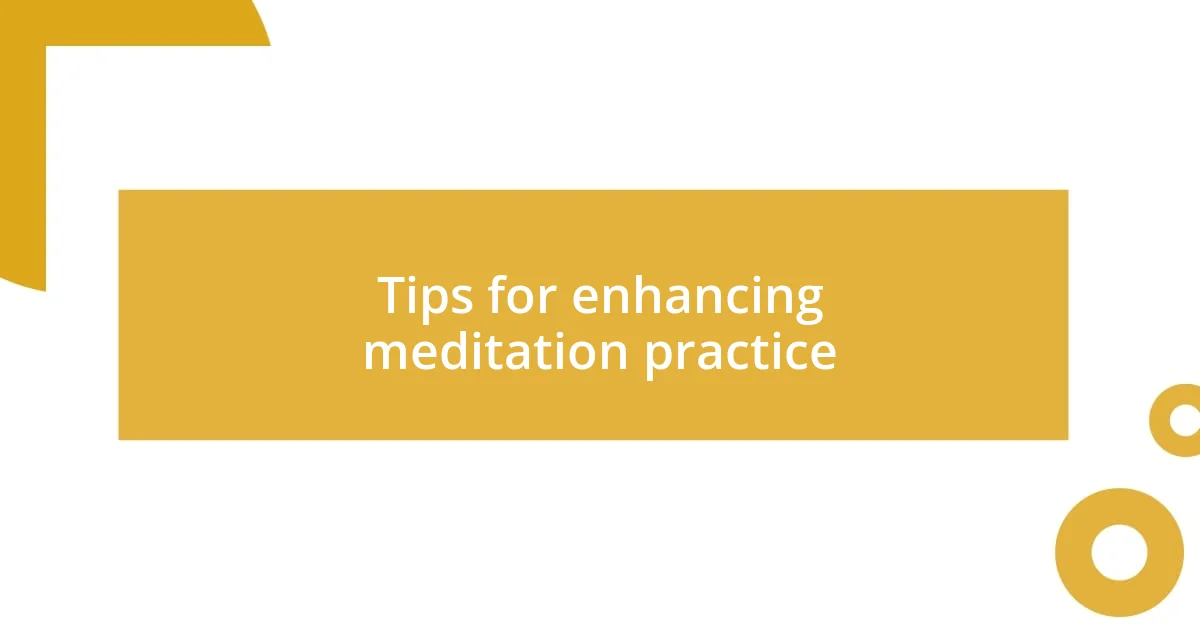
Tips for enhancing meditation practice
One of the most effective ways I’ve enhanced my meditation practice is by creating a dedicated space just for this purpose. I remember transforming a small corner of my living room into a peaceful retreat with soft lighting and a few meaningful decor pieces. Having a physical space that feels inviting helps me set the mood and signal to my mind that it’s time to unwind. Have you set up a space for meditation yet? Even a simple cushion can make a difference!
I also discovered the magic of consistency through my journey. At first, I struggled to commit to a regular practice, but then I started incorporating meditation into my daily routine, just like brushing my teeth. The days I prioritize this time, even if it’s just for five minutes, I find a deeper connection to my thoughts and emotions. Imagine how your day might shift if you dedicated just a few moments to yourself each morning or evening. It truly does feel like hitting a reset button on my mind.
Lastly, I realized the importance of being open to different types of meditation. Initially, I was drawn to guided sessions, but once I ventured into silent meditation or mindfulness walking, I experienced deeper layers of awareness. Each method offered me fresh perspectives and insights that enriched my overall experience. Have you ever stepped out of your comfort zone with meditation? Trying different approaches can be enlightening, and you might be surprised at the treasures you uncover within yourself.


